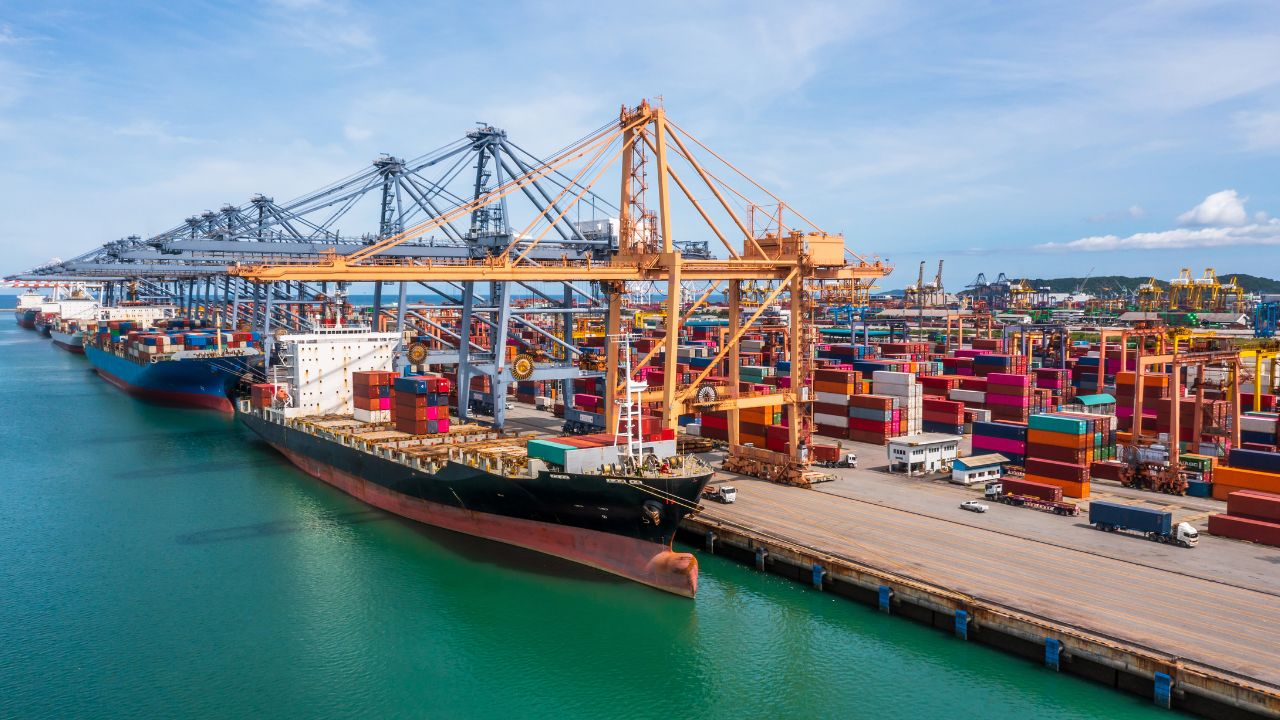When a seller plans to export goods, they usually give the buyer an export invoice. It has key details about the shipping process. This document ensures clear communication and understanding between both parties. A section of the export invoice details the payment terms. It states when the buyer must pay and the seller’s conditions for receiving it.
Indian exporters often use bill discounting to address cash flow issues. It provides immediate funds. Additionally, exporters can use the Advance Authorisation Scheme. It allows duty-free imports of inputs for export production. This helps with efficient financial management.
What is Export Bill Discounting?
Export bill discounting is a financial tool for exporters. It lets them get immediate funds by using unpaid invoices as collateral for a loan. Exporters wait for customers to settle bills in 30 to 90 days. But, with bill discounting, they can seek a bank advance against their invoices. After assessing the risk, the bank funds the exporter but deducts a fee from the invoice. This fee mirrors the cost of borrowing money.
In this arrangement, the exporter must ensure the customer pays the invoice. If the customer fails to pay, the bank is not liable. The exporter must cover any unpaid amounts. This aspect sets export bill discounting apart from export factoring. The financial institution settles the supplier’s invoice immediately. It does not treat the payment as a loan.
The importer’s bank may back export bill discounting with a letter of credit. LC discounting is the term used for this. This letter of credit guarantees payment of the invoice. It lowers the risk for the financial institution. As a result, the discounting service becomes more cost-effective for the exporter.
When a financial institution discounts the bill, they charge discounting charges. This fee is the interest on the amount advanced to the exporter for its invoices. Bill discounting is a useful tool for exporters. It lets them access funds tied up in invoices before the usual payment period of 30 to 120 days.
Key Features of Export Bill Discounting
Export bill discounting has several benefits. This makes it an attractive option for exporters. This process provides businesses with rapid funding availability. They sell their export bills to a financial institution at a discount before payment. This arrangement improves cash flow. It lets companies cover expenses without waiting for payment from overseas clients.
Improve Working Capital and Flow of Cash
Export bill discounting helps businesses needing quick cash. When international buyers delay payments, it is useful. Due to logistical issues, international trade payments often take longer than expected. This delay may disrupt businesses and hurt cash flow. It may also stress working capital.
Companies bridge funding gaps through strategic export bill discounting. They can get quick money instead of waiting for payment. This ensures they have what they need to operate without disruptions. This tool boosts cash flow and helps manage working capital. It lets businesses operate despite delays in international trade.
Easy Financing Process
Export bill discounting is a hassle-free and efficient option for sellers. Once a bank confirms the exporter’s good credit, funding is quick and needs little paperwork. This easy access makes it a valuable tool for exporters. They want to manage their working capital. Once established, the exporter can use this service to quickly access funds.
No Need for Collateral
Export bill discounting is better than standard loans. It doesn’t need collateral from exporters. This is especially true when a letter of credit supports the transaction. Exporters can rest easy. They need not offer their assets as collateral. It’s a more flexible, low-risk option. They won’t lose their assets, even if they struggle to repay.
Treated Like Loan
Exporters can gain tax benefits from export bill discounting. It is like a term loan, so it has the same tax advantages as a regular loan. This classification benefits the exporter, especially in reporting and taxes. Bill discounting has a special advantage. It treats the transaction like a loan. In contrast, invoice factoring changes the payment process. This might help exporters. It could boost their finances and give them more flexibility.
Documents Required for Export Bill Discounting
Exporters must submit several documents to the bank or a discounting company to discount their export bills. These include:
-
Bill of Lading: It serves as proof that someone has shipped the goods.
-
Commercial Invoice: A detailed list of the goods sold, including prices.
-
Packing List: Details on packing and shipping the goods.
-
Bill of Exchange: A document stating the amount the buyer is required to pay.
-
Certificate of Origin: It confirms the manufacturing location of the goods.
-
Export Order Copy: A copy of the buy order from the buyer.
-
Request for Discount: The original request and copies to discount the export bills.
Also, the bank will test the exporter’s ability to repay the loan by reviewing:
-
Financial Statements: These documents reveal the exporter’s financial condition.
-
Past Loan Repayment Records: This shows how the exporter managed past loans.
-
Debtor’s Credit Score: The credit score of the buyer who owes payment to the exporter.
These documents give the bank a full view of the exporter’s business and finances. They help the bank decide whether to offer the discounting service.
Conclusion
Export bill discounting is a profitable strategy. It uses outstanding bills as leverage. It provides exporters with instant cash flow. Companies get cash by selling invoices to lenders at reduced rates. This helps operations if international buyers delay payments. This approach, backed by a letter of credit, boosts working capital. It also provides a simple, collateral-free financing process.
Additionally, exporters benefit tax-wise from export bill discounting, which is like a loan. To use this service, exporters must present key documents. These include the bill of lading, commercial invoice, and financial statements. They help banks assess the risk. Export bill discounting is a valuable tool. It helps exporters stay stable and continue operations despite delayed international payments.
